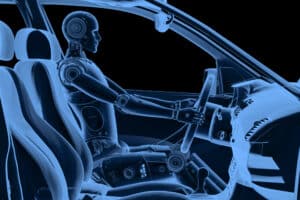
Digital twins are being built through the convergence of simulation technology, high-performance computing, and artificial intelligence.
Product and facility testing involving physical objects could soon be rendered unnecessary –thanks to the emergence of digital twins. And digital twin technology is catching on fast.
That’s the takeaway from a survey of 2,007 business and IT executives, published by Altair, foresees an end to physical prototyping in the next three to six years, as projected by 67% of respondents. “That means no more crash test dummies,” the survey’s authors suggest.
The survey finds widespread adoption of digital twins across industries, employed in product development, risk assessment, and sustainability. Digital twins are being built through the convergence of simulation technology, high-performance computing, and artificial intelligence.
See also: Digital Twins Now in Use at One in Five Factories, Survey Finds
The study’s authors define digital twin technology as “the process of using data streams to create a digital representation of a real-world asset to improve collaboration, information access, and
decision-making.” Data gleaned from digital twins provides decision-makers “a world of new insight and can help teams work more efficiently to create better products, generate less waste, consume less energy, better assess risk, and so much more.”
Nearly three in four (69%) of executives are leveraging digital twins. At the same time, however, digital twins are new and scene – 71% only began investing in the technology in the past year. Of those organizations not currently using digital twins, half expect their company to adopt the technology within three years.
The survey also suggests a significant internal disconnect exists between upper management and user-level respondents. While 81% of management respondents say their organization is using digital twin technology, only 58% of user-level respondents say this is the case. More than half of respondents overall stated they have limited knowledge about the technology or find it confusing.
Respondents associated a myriad of technologies with digital twin technology, including CAD/CAE, AI, machine learning, and real-time data analysis.
Organizations use digital twin technology for a wide range of functions and reasons, with top use cases including 95% to better inform new product development; 51% to create smart objects; and 50% to monitor real-world objects in real-time.
Respondents reported where they see the greatest impacts of digital twin technology. Seventy-three percent report more accurate risk assessments, faster time to market, and improved customer satisfaction. Likewise, 73% say the technology has made their products or processes more energy-efficient or less wasteful. Another 62% have seen reduced maintenance and warranty costs (62%).
Respondents also believe digital twin technology will reshape the way products are developed in the future, with 36% saying digital twins will speed up product development timelines, and 28% predicting fewer simulations will be needed.





























